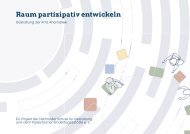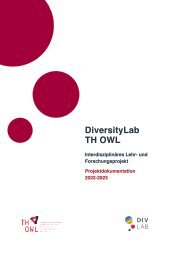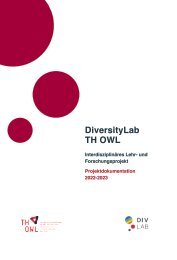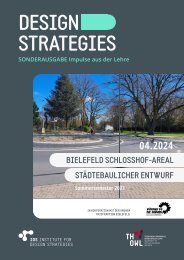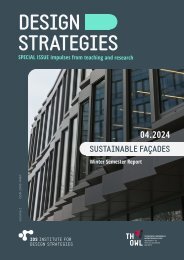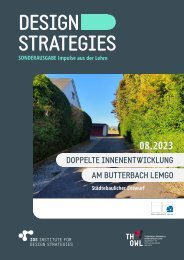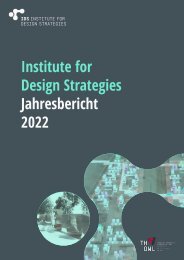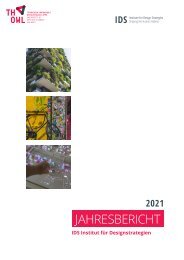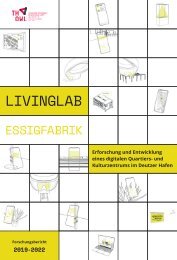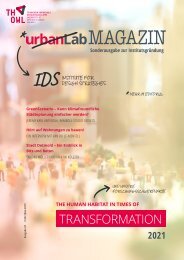MONOCAB Design
Reactivating Unused Rail Tracks for Rural Transport In the context of climate change, it is increasingly urgent to reassess our commuting patterns. While transportation challenges often focus on urban areas, it is essential to address rural communities' needs by implementing efficient and sustainable solutions. Reactivating disused train tracks is an effective approach to facilitate mobility in rural areas, enhance quality of life, and promote economic growth. The MONOCAB, a novel monorail vehicle, offers a practical means of repurposing these unused rail tracks, particularly single lines unsuitable for conventional trains due to their one-directional travel limitation. Repurposing neglected rail networks with the MONOCAB can revitalize infrastructure for rural communities, establish connections between neighboring towns and essential services, and enhance sustainability. The MONOCAB system, operating solely on electric power, reduces carbon footprints, minimizes emissions, and addresses air and noise pollution, contributing to environmental conservation.
Reactivating Unused Rail Tracks for Rural Transport
In the context of climate change, it is increasingly urgent to reassess our commuting patterns. While transportation challenges often focus on urban areas, it is essential to address rural communities' needs by implementing efficient and sustainable solutions. Reactivating disused train tracks is an effective approach to facilitate mobility in rural areas, enhance quality of life, and promote economic growth. The MONOCAB, a novel monorail vehicle, offers a practical means of repurposing these unused rail tracks, particularly single lines unsuitable for conventional trains due to their one-directional travel limitation.
Repurposing neglected rail networks with the MONOCAB can revitalize infrastructure for rural communities, establish connections between neighboring towns and essential services, and enhance sustainability. The MONOCAB system, operating solely on electric power, reduces carbon footprints, minimizes emissions, and addresses air and noise pollution, contributing to environmental conservation.
Create successful ePaper yourself
Turn your PDF publications into a flip-book with our unique Google optimized e-Paper software.
design<br />
1
<strong>MONOCAB</strong> OWL is funded as part of the implementation of the<br />
Operational Programme of the European Regional Development<br />
Fund (ERDF) in North Rhine-Westphalia for the period 2014-2020<br />
with co-financing from the Ministry of the Environment, Nature<br />
Conservation and Transport of the State of North Rhine-Westphalia.
Impressum<br />
© Ulrich Nether, Hans Sachs<br />
First edition, Self-published, Detmold, 2024<br />
ISBN: 978-3-939349-51-1<br />
Contributing Editors:<br />
Layout / Gestaltung:<br />
Fotos / Illustrations:<br />
Carolina Meirelles R. S. Menezes<br />
Maximilian Mueh<br />
Prof. Ulrich Nether<br />
Prof. Hans Sachs<br />
Carolina Meirelles R. S. Menezes<br />
<strong>Design</strong> Team Monocab OWL<br />
Team Monocab OWL<br />
Peter Wehowsky<br />
Project Partners<br />
Cover-Foto: Peter Wehowsky<br />
This work, including its parts, is protected by copyright. Any utilization<br />
is not permitted without the consent of the authors. This applies in particular to<br />
digital or other duplication, translation, distribution and making<br />
it available to the public.<br />
Detmold School of <strong>Design</strong>
Partners<br />
6
Content<br />
1. CONTEXT AND FRAMEWORK<br />
1.1. The <strong>MONOCAB</strong> and OWL<br />
1.2. Research Structure<br />
1.3. Outcomes<br />
2. DESIGN PROCESS<br />
2.1. Timeline<br />
2.2. Concept Development<br />
2.3. Digital Workflows<br />
2.4. Physical Prototyping<br />
3. DESIGN FEATURES<br />
3.1. Integration to Rural Context<br />
3.2. Adaptive Interior<br />
3.3 Accessibility and Inclusivity<br />
3.4. Sustainable Materials<br />
3.5. Haptic Experiences<br />
3.6. Shy Technology<br />
4. CONCLUSION<br />
7
1.<br />
Context and<br />
Framework<br />
1. 1. THE <strong>MONOCAB</strong> AND OWL<br />
1.2. Research Structure<br />
1.3. Outcomes<br />
REACTIVATING UNUSED RAIL TRACKS<br />
FOR RURAL TRANSPORT<br />
In the context of climate change and its wide-ranging implications,<br />
there is an increasing urgency to reassess our commuting<br />
patterns. While discussions surrounding transportation challenges<br />
often focus on urban areas, it is equally essential to address<br />
the needs of rural communities by implementing efficient and<br />
sustainable solutions. An effective approach in this regard<br />
involves the reactivation of disused train tracks, which holds<br />
significant importance for facilitating mobility in rural areas,<br />
enhancing maybe mention over-reliance quality of life, and<br />
promoting economic growth. The <strong>MONOCAB</strong>, a novel monorail<br />
vehicle, presents a practical means of repurposing these unused<br />
rail tracks, particularly those that consist of single lines unsuitable<br />
for conventional trains due to their restriction to one-directional<br />
travel at any given time.<br />
By repurposing neglected rail networks, the <strong>MONOCAB</strong> can serve<br />
as a vital lifeline for rural regions, revitalizing the infrastructure<br />
for the benefit of local communities and establishing connections<br />
between neighbouring towns and crucial services. Through<br />
the implementation of the <strong>MONOCAB</strong> system, rural areas can<br />
achieve enhanced sustainability, effectively reducing their carbon<br />
footprint while simultaneously fostering improved connectivity and<br />
convenience. The <strong>MONOCAB</strong> operates solely on electric power,<br />
thereby minimizing emissions and contributing to the reduction<br />
of air and noise pollution and addressing pressing environmental<br />
concerns.<br />
8<br />
Proposed design for<br />
the <strong>MONOCAB</strong> and<br />
example of use before<br />
construction phase
Section of the prospective<br />
test route starting<br />
in Lemgo, NRW<br />
TESTING GROUNDS: OSTWESTFALEN-LIPPE, NRW<br />
Ostwestfalen-Lippe (OWL) is a rural region in Germany that<br />
encompasses several sections of unused single-track rail<br />
infrastructure. Alongside major cities like Bielefeld and Paderborn,<br />
OWL is characterized by a polycentric layout, with numerous small<br />
to medium-sized cities within its boundaries. OWL stands out as a<br />
robust region in Germany for engineering and industrial electronics,<br />
with renowned companies like Phoenix Contact and Weidmüller.<br />
Additionally, OWL has a thriving furniture sector, with Becker<br />
Brakel recognized as a world leading expert in moulded wood,<br />
including applications within the realm of public transportation.<br />
OWL’s available rail infrastructure and local expertise make it<br />
an ideal testing ground for the <strong>MONOCAB</strong> system, allowing for<br />
comprehensive evaluations and collaboration with regional<br />
stakeholders.<br />
9
1.<br />
Context and<br />
Framework<br />
EARLY CONCEPT<br />
Behind the project team is a cooperation of the TH OWL as the<br />
leading institution, the Hochschule Bielefeld, and the Fraunhofer<br />
IOSB-INA. The original idea derives from a concept developed by<br />
the Landeseisenbahn Lippe e.V.<br />
1.1. The <strong>MONOCAB</strong> and OWL<br />
1. 2. RESEARCH STRUCTURE<br />
1.3. Outcomes<br />
Idea sketch for the<br />
<strong>MONOCAB</strong> by the<br />
Landeseisenbahn<br />
Lippe e.V.<br />
INTERDISCIPLINARY COOPERATION<br />
10<br />
An interdisciplinary team comprising of engineers and designers<br />
from the three partner institutions was formed to undertake the<br />
project. The team was structured into nine groups, each assigned<br />
specific tasks, as illustrated in the accompanying graphic. Each<br />
group operated autonomously under the guidance of a designated<br />
group leader. Regular weekly meetings were held among all group<br />
leaders to ensure coordination and provide updates. Communication<br />
and collaboration among team members occurred as needed,<br />
facilitating effective information exchange. While this publication<br />
primarily focuses on the work carried out by AG Kabine (Cabin<br />
development team), the team responsible for the <strong>MONOCAB</strong>’s<br />
design, it is important to note that successful outcomes were<br />
achieved through vital interactions with other groups throughout<br />
the entire process.
IMPORTANT PARTNERS<br />
The development and realization of the cabin design of the <strong>MONOCAB</strong><br />
OWL would not have been possible without the help of many partners<br />
from industry and planning. The following companies supported the AG<br />
Kabine in the design and construction of the design mock-up.<br />
• GREENBOATS; a Bremen based company specialised on high end<br />
natural fibre composite (NFC) based structures.<br />
• BECKER BRAKEL; world leading expert in moulded wood<br />
• NUO; fabricator of wood textiles from Italy and Germany<br />
• MINDWALKS; experts in interaction design from Cologne<br />
• YACHTCORK; producers of cork flooring systems for boats and<br />
camper vans, based in Lower Saxony<br />
• ISRI/AUNDE; international experts in seating and fabrics for the<br />
automotive industry from North Rhine Westphalia<br />
• ENVUE HOMBURG; experts in light planning from Bielefeld/ Berlin<br />
AG Fahrwerk<br />
(Undercarriage)<br />
AG Strecke und Erprobung<br />
(Track and Testing)<br />
AG Kommunikation<br />
(Communication)<br />
AG Koordination<br />
(Coordination)<br />
AG Gesamtmodell<br />
(Complete Model)<br />
AG Kabine<br />
(Cabin)<br />
Composition of work<br />
groups collaborating<br />
on the development<br />
of the Monocab<br />
AG Gesamtkonzept<br />
(Overall Concept)<br />
AG Stabilisierung<br />
(Stabilization)<br />
AG Automatisiertes Fahren<br />
(Autonomous Driving)<br />
11
1.<br />
Context and<br />
Framework<br />
1.1. The <strong>MONOCAB</strong> and OWL<br />
1. 2. Research Structure<br />
1.3. OUTCOMES<br />
PARALLEL PATHS FOR SHARED GOALS<br />
As part of the vehicle development process for the <strong>MONOCAB</strong>, the<br />
team made a strategic decision to divide the development into<br />
two prototypes: a looks-like mock-up and a works-like vehicle. This<br />
approach aligns with common practices in product development<br />
where, after an ideation process, the design and engineering<br />
are developed in parallel. It allows for a more agile focused and<br />
iterative design process.<br />
DESIGN MOCKUP<br />
The looks-like demonstrator primarily focuses on the vision of the<br />
<strong>MONOCAB</strong>, led by the AG Kabine. By creating a cabin mock-up<br />
that closely resembles the final intended design, functionality and<br />
comfort, the team created a model of what the future of <strong>MONOCAB</strong><br />
will be and how it will be experienced by users. This demonstrator<br />
serves as a crucial tool for gathering stakeholder and user input,<br />
ensuring that the <strong>MONOCAB</strong> meets the desired expectations and<br />
requirements, but also as an incentive for a new feeling of mobility.<br />
TECH DEMONSTRATOR<br />
On the other hand, the works-like version concentrates on functional<br />
aspects and performance capabilities of the <strong>MONOCAB</strong>. This<br />
demonstrator involves integrating key components and systems<br />
to simulate the vehicle’s intended functionality. By testing and<br />
validating various technical aspects, such as the gyroscope based<br />
stabilisation system, the works-like demonstrator enables the team<br />
to identify and address any potential issues or improvements early<br />
in the development process.<br />
12
<strong>Design</strong> Mock-up<br />
_1 unit_<br />
Demonstrates use,<br />
experience and materiality<br />
13
Tech Demonstrator<br />
_2 units_<br />
Demonstrates driving and<br />
stabilization technologies<br />
14
The complexity of the <strong>MONOCAB</strong> project required the development<br />
to be initially split into these two manageable versions with a<br />
specialized focus in order for both engineering and design factors<br />
to be addressed in the first phase of the project. In the next<br />
project phase, both looks-like and works-like demonstrators will<br />
be combined in a validation prototype. This approach allows for<br />
incremental design refinements, user feedback integration, and<br />
the mitigation of risks and challenges, ultimately leading to a<br />
more robust and successful final product.<br />
PUBLIC EVENTS<br />
• November 2021_ During the Detmold Conference Week 2021, the AG Kabine presented the work in<br />
progress of the prototype, followed by a discussion with specialists in the sector<br />
• 19. April 2022_ Ina Brandes, minister of transport of the state of North Rhine Westphalia (NRW),<br />
visits the fabrication hall. AG Kabine presents its vision using VR simulation<br />
• 01.05.22_ public event; AG Kabine presents its vision to the general public using a VR simulation<br />
• 03.10.22_ public event; the works-like demonstator is running on a track, the looks-like demonstrator<br />
is presented and accessible to the public. Oliver Krischer, minister for Environment, Nature<br />
Conservation and Transport of NRW, is one of the invited guests.<br />
• 24.11.22 _innocam.NRW Mobility Meeting 2022, conference; Looks-like demonstrator presented<br />
at Ministry of Environment, Nature Conservation and Transport of NRW at Dusseldorf<br />
• 17.-21. April 2023_ Hannover Fair; works-like demonstrator is shown on the fair<br />
• 27.-28. April 2023_ <strong>MONOCAB</strong> Symposium; AG Kabine presents the design process<br />
• 24.-26. May 2023_ Polis Mobility, Cologne; Looks-like demonstrator presented at the fair<br />
15
16
17
2.<br />
<strong>Design</strong><br />
Process<br />
studies / jan ‘21<br />
2.1. TIMELINE<br />
2.2. Concept Research<br />
2.3. Digital Workflows<br />
2.4. Physical Prototyping<br />
design brief / dec ‘20<br />
3 concepts 3 concepts / apr ’21 / apr’21<br />
final prototype / oct ‘22<br />
assembly assembly Cologne Cologne<br />
/ aug /’22<br />
aug ‘22<br />
18
final shape / jun’ 21<br />
prototype #1 / may ‘21<br />
design freeze exterior / sep’ 21<br />
design freeze<br />
interior / may ‘22<br />
assembly assembly Detmold Detmold / jul ‘22 / jul ’22<br />
detailed interior<br />
design / mar ‘22 prototype #2 / jan ‘21<br />
19
2.<br />
<strong>Design</strong><br />
Process<br />
2.1. Timeline<br />
2. 2. CONCEPT DEVELOPMENT<br />
2.3. Digital Workflows<br />
2.4. Physical Prototyping<br />
AREAS OF FOCUS<br />
The design process for the <strong>MONOCAB</strong> cabin was led along two main<br />
tracks: exterior and interior design. A third theme – user experience and<br />
user interfaces – intersected both tracks and was present in both main<br />
areas of focus. Issues were often multi-faceted and covered more than<br />
one area of focus. The intersections between interior and exterior features<br />
also proved especially decisive. This was in part due to the development<br />
and detailing of the interior and exterior happening at different<br />
paces but requiring consistency between them. At the same time, both<br />
focus areas needed to be arranged with the technical parameters and<br />
constraints developed by the engineers.<br />
Work structure within<br />
the design team<br />
20
Initial dimensional<br />
requirements which<br />
changed as the<br />
components for driving<br />
and stabilization<br />
were devleoped<br />
INITIAL DESIGN BRIEF<br />
Early design requirements for the cabin were strictly dimensional, with<br />
additional considerations for weight distribution and aerodynamics.<br />
Some dimensional attributes were given by the engineering team, also in<br />
context of existing regulations and infrastructure, to fit within the capacity<br />
of the driving mechanisms. The length of the vehicle corresponds<br />
to the space necessary for housing mechanical gear, while the width is<br />
limited by the distance between standard railway tracks. Lastly, since the<br />
height of the cabin is proportional to the momentum to be balanced by<br />
the moving and gyroscopes, this was also established by the system’s<br />
specifications. As such, the challenge became making the long, narrow<br />
interior work for a multitude of scenarios and ensuring a comfortable<br />
occupation.<br />
21
22<br />
Mapping of possible<br />
challenges and<br />
requirements for<br />
the cabin from an<br />
engineering perspective
Frame<br />
Metal<br />
Wood or metal<br />
hybrid<br />
Wood<br />
Wood<br />
Skin<br />
Glass fibre, carbon<br />
fibre, mould-free<br />
fabrication<br />
Natural fibre<br />
composite<br />
Textile<br />
Mould-less natural<br />
fibre composite<br />
Shape<br />
Simple and<br />
modular<br />
Zeppelin-like<br />
Tube<br />
References<br />
THE <strong>MONOCAB</strong> WITHIN AN ECOSYSTEM OF<br />
TRANSPORTATION OPTIONS<br />
Considering the uniqueness of the vehicle at hand, the design team collected<br />
references from a variety of transportation modes. The <strong>MONOCAB</strong><br />
is neither car, train nor plane but collects different attributes from each<br />
sector. At the same time, the design has a clear focus on the future and<br />
questions what will be the demands for transport in rural areas in ten<br />
years. How will the <strong>MONOCAB</strong> fit within an ecosystem of more diverse<br />
modes of transport and within a migration towards mobility as a service<br />
(MaaS).<br />
Despite engineering-related requirements, there were no set definition<br />
for the cabin’s features and characteristics. The design team placed it<br />
within a spectrum of conservative to innovative concepts in terms of<br />
materials and experiences, pushing for new cutting edge concepts while<br />
also acknowledging the short time frame for the production of a full-size<br />
mock-up.<br />
23
2.<br />
<strong>Design</strong><br />
Process<br />
2.1. Timeline<br />
2. 2. Concept development<br />
2.3. DIGITAL WORKFLOWS<br />
2.4. Physical Prototyping<br />
ONLINE COLLABORATIVE PROCESSES<br />
AND CAD MODELLING<br />
The development process of the <strong>MONOCAB</strong> faced significant challenges<br />
due to the pandemic, necessitating a shift to remote work for a large portion<br />
of the team. Collaborative tools such as Zoom and Miro played an<br />
important role in facilitating effective communication and collaboration<br />
among team members. Miro, in particular, an online collaboration platform,<br />
proved vital for the success of the <strong>MONOCAB</strong> project.<br />
In terms of 3D-modeling, the team utilized Rhino, a powerful software,<br />
along with its visual programming plugin, Grasshopper. Grasshopper<br />
enabled an iterative design process, offering control over various design<br />
parameters to achieve the desired output.<br />
For rapid visualization of the vehicle, Twinmotion, a real-time visualization<br />
tool, was introduced. Twinmotion not only provided a quick visualization<br />
capability but also supported the use of virtual reality (VR) headsets.<br />
This VR functionality proved invaluable in gaining a better understanding<br />
of the vehicle’s scale, which was especially important because physical<br />
modelling was not possible in the beginning of the project, due to the<br />
pandemic restrictions. VR was also highly useful during presentations<br />
during the whole project.<br />
24
Snapshots of the<br />
technical CAD models<br />
including chassis and<br />
balance technology<br />
Snapshot of one of<br />
the collaborative<br />
whiteboards used for<br />
the design process<br />
25
2.<br />
<strong>Design</strong><br />
Process<br />
2.1. Timeline<br />
2. 2. Concept development<br />
2.3. Digital Workflows<br />
2.4. PHYSICAL PROTOTYPING<br />
TESTING IDEAS IN PHYSICAL SPACE<br />
Once pandemic restrictions allowed it, the team initiated to work with<br />
physical models and mock-ups to validate the design. These models,<br />
constructed using basic materials such as roof battens and cardboard,<br />
proved to be highly effective in testing dimensions and spatial considerations.<br />
The integration of these physical models with virtual reality<br />
(VR) technology further enhanced the design evaluation process, offering<br />
valuable insights and facilitating a comprehensive understanding of the<br />
<strong>MONOCAB</strong>’s form and functionality.<br />
26
April 2021<br />
First full scale prototype to<br />
understand dimensions<br />
December 2021<br />
Second full scale prototype,<br />
one half cabin to test ergonomics<br />
and use<br />
27
28
29
3.<br />
<strong>Design</strong><br />
Features<br />
3.1. INTEGRATION<br />
TO RURAL CONTEXT<br />
3.2. Adaptive Interior<br />
3.3 Accessibility and Inclusivity<br />
3.4. Sustainable Materials<br />
3.5. Haptic Experiences<br />
3.6. Shy Technology<br />
THE FUTURE IN THE COUNTRYSIDE<br />
Despite potential applications in higher density urban areas, the MONO-<br />
CAB was specifically devised as a means to reactivate abandoned<br />
infrastructure in rural areas. Thus, the design of the vehicle was strongly<br />
influenced by the needs, characteristics and potential of this specific<br />
environment. It also reimagines what future scenarios might develop in<br />
rural areas. Rather than characterize the countryside as a relic in the face<br />
of urbanization, incompatible with innovative technologies, we looked to<br />
growing trends promoting life in less dense settlements. The countryside<br />
seen as a setting for connecting with open spaces and landscapes, community<br />
and balanced lifestyles. New technologies fit into this vision by<br />
offering new means of connection with urban centres and other resources.<br />
Mechanisms that meet the rhythms and particularities of rural areas<br />
without relegating them to bygone eras.<br />
Dispersed settlements mean accommodating for multi-modal transport<br />
integration. This might take shape as parking areas close to stations,<br />
but also in creating enough space within the cabin for the transport of<br />
bicycles as well as passengers. It also manifests in features that benefit<br />
not only integration but also accessibility, such as the levelled access<br />
between the platform and cabin interior.<br />
30
Each <strong>MONOCAB</strong> has four generous windows curving into the ceiling,<br />
allowing passengers to take in the landscape. Tree tunnels, yellow canola<br />
fields, autumn colours, creeks and rivers. The German countryside offers<br />
a variety of sights, and their shifting nature through the seasons serves<br />
as a reminder of natural rhythms and cycles. The design and placement<br />
of the windows in the <strong>MONOCAB</strong> are a direct acknowledgement of the<br />
vibrant settings it will be driving through.<br />
The tones and textures of the countryside are also reflected in the materials<br />
chosen for the <strong>MONOCAB</strong>. Rather than reflect a future of white,<br />
shiny surfaces, the design team looked to the overlay of textures present<br />
in rural architecture and landscapes for inspiration. Between cork, wood<br />
and natural fibres, the <strong>MONOCAB</strong> looks at home driving through farms<br />
and fields, while distinct surface finishes and shapes make it stand out<br />
as a contemporary design.<br />
31
3.<br />
<strong>Design</strong><br />
Features<br />
3.1. Integration to Rural Context<br />
3.2. ADAPTIVE INTERIOR<br />
3.3 Accessibility and Inclusivity<br />
3.4. Sustainable Materials<br />
3.5. Haptic Experiences<br />
3.6. Shy Technology<br />
ACCOMODATING DIVERSE SCENARIOS OF USE<br />
Unlike most transport where the passenger adapts to the interior configuration<br />
of the vehicle, the interior of the <strong>MONOCAB</strong> was designed to<br />
adapt to passengers’ needs. Seats fold away to accommodate wheelchair<br />
users, strollers, bicycles and luggage. Additional seats fold out to<br />
increase seating capacity from four to six adults. Tables fold out to be<br />
used with the main seats. Each half of the cabin can be used for a different<br />
purpose, and there are endless combinations of features to suit<br />
almost any use scenario.<br />
32
33
3.<br />
<strong>Design</strong><br />
Features<br />
3.1. Integration to Rural Context<br />
3.2. Adaptive Interior<br />
3.3 ACCESSIBILITY AND<br />
INCLUSIVITY<br />
3.4. Sustainable Materials<br />
3.5. Haptic Experiences<br />
3.6. Shy Technology<br />
COMFORT AND EASE OF ACCESS FOR ALL NEEDS<br />
Despite its narrow dimensions, the design of the <strong>MONOCAB</strong> also aimed<br />
at providing easy accessibility for a variety of users. The wide dimensions<br />
of the four main seats serve multiple purposes including providing wide<br />
enough space for a wheelchair to be rolled in when the seat is folded<br />
away. This also means that in reality all cabins are wheelchair friendly<br />
and that wheelchair users benefit from the same views and seating positions<br />
as other passengers.<br />
Door dimensions and inner configuration were also designed to allow<br />
wheelchair users to rotate and reposition as they enter the vehicle. This<br />
is further enhanced by the bridge feature of the door which folds out so<br />
that all passengers can access the vehicle with a level, gap-free access<br />
between the interior and the platform.<br />
34
35
36
TWO-SENSES PRINCIPLE<br />
To approach accessibility not only from a physical perspective but also<br />
in terms of communication, the two senses principle was applied throughout<br />
interactions with the user. This means that any communication<br />
with passengers travels via at least two senses, mostly vision and sound.<br />
Information about the incoming vehicle for example appears on the side<br />
panel display integrated into the exterior shell and is also communicated<br />
via speakers. In the interior, the vehicle share information regarding<br />
the ride on the display integrated into the inner cladding and also<br />
through speakers embedded in the headrests. Users can control light<br />
and volume through the touch-enabled display, and it is also foreseen<br />
that voice control will be an option in further iterations. The main goal for<br />
this redundancy in communication features is to ensure that passengers<br />
with different sensorial needs always have access to information in a<br />
manner that suits them.<br />
37
3.<br />
<strong>Design</strong><br />
Features<br />
3.1. Integration to Rural Context<br />
3.2. Adaptive Interior<br />
3.3 Accessibility and Inclusivity<br />
3.4. SUSTAINABLE MATERIALS<br />
3.5. Haptic Experiences<br />
3.6. Shy Technology<br />
RETHINKING MATERIALITY<br />
A significant part of the research behind the <strong>MONOCAB</strong> cabin design<br />
concerned materials and associated fabrication processes. The Cradle<br />
to Cradle approach described by McDonough and Braungart served as<br />
guiding principle for decision-making. The approach considers materials<br />
as resources that can circulate in two distinct cycles. The biological cycle<br />
for organic materials and the technical cycle for synthetic materials.<br />
These materials can be combined in ways that allow for future disassembly,<br />
separation, recycling or reuse. It also takes into consideration<br />
other factors including material health, energy required for production<br />
and social responsibility. Local suppliers and materials were also favoured<br />
in the process.<br />
Initial research broached a wide-range of possibilities, including textile<br />
shells and wooden frames among others. Final decisions however<br />
were made considering feasibility of implementation within the limited<br />
time-frame and with limited human resources. For this reason, too, compromises<br />
were made in building the design mock-up where quick, irreversible<br />
solutions like glue were used. These can probably be avoided<br />
once the design goes through further iterations.<br />
NATURAL FIBRE COMPOSITE (NFC) // PARTNER:<br />
GREENBOATS<br />
38<br />
The design team worked closely with partner company Greenboats to<br />
design and fabricate a natural fibre composite based outer shell. This<br />
decision was especially guided by the commitment to substitute petrol<br />
based materials for bio-based alternatives where possible. The outer<br />
shell is composed of natural flax fibre reinforced by a cork or balsa wood<br />
core, depending on the spot, and bio-based resin. Although there are no<br />
100% bio-based resins that provide the stability required by the MONO-<br />
CAB, significant advancements in research point to a solution in the<br />
coming years. The NFC shell is extremely lightweight, robust and grants<br />
a unique texture to the geometry which matches the natural textures<br />
across the <strong>MONOCAB</strong>.
Details of the NFC shell<br />
texture with embedded<br />
lighting and moulded<br />
plywood furniture<br />
MOULDED PLYWOOD // PARTNER: BECKER BRAKEL<br />
The main elements of the <strong>MONOCAB</strong>’s interior furniture are moulded<br />
ash plywood parts. These were locally produced by Becker Brakel and<br />
provided a lightweight yet warm and welcoming atmosphere for the vehicle.<br />
The option for moulded ply provided manifold benefits, including<br />
the possibility of shaping it into rounder shapes and robustness even<br />
in thin sections. The main seats and side console are mainly composed<br />
of 12mm thick sections, while the smaller side seat is 10mm. With<br />
moulded plywood, it was also possible to integrate parts of the folding<br />
mechanisms into pieces, so that the turning axle of the main seat finds<br />
itself sandwiched between plywood layers to create a more discrete<br />
assemblage.<br />
NUO // PARTNER: NUO DESIGN<br />
Among the variety of cladding materials considered for the interior<br />
panels of the vehicle, the design settled for upholstered NUO panels.<br />
NUO is a composite made of a laser-engraved veneer layer with a textile<br />
backing. This combination allows the wood veneer to bend and behave<br />
like a textile, and therefore affords it to be used in upholstery. For the<br />
39
cladding panels, NUO with beech veneer was used in combination with<br />
a cork filling and an MDF base. In this case, cork was chosen for its<br />
recyclability and renewable nature in comparison to foam. On the other<br />
hand, once the panels were assembled, the end result missed the added<br />
softness of foam and the edges formed sharper corners than intended.<br />
In a futher iteration, a softer core materials would be more suitable and<br />
better able to showcase flexibility of NUO.<br />
POLYAMIDE TEXTILES // PARTNER: ISRI/AUNDE<br />
In partnership with ISRI/AUNDE, custom prints were produced for the<br />
<strong>MONOCAB</strong> seats. Maintaining the focus on sustainable materials, polyamide<br />
fibres were selected which are not only 100% recycled but can also<br />
be further recycled at the end of life. The melange print creates movement<br />
and activity while also preventing early signs of wear. ISRI/AUNDE<br />
also developed custom cushion shapes to fit the existing plywood furniture.<br />
These are composed of varying foam thickness according to application<br />
and moulded ABS carriers.<br />
Early tests for backlighting<br />
NUO fabric with LEDs<br />
and details of the custom<br />
fabric and cushions<br />
produced by ISRI/AUNDE<br />
for the <strong>MONOCAB</strong><br />
40
CNC-milled cork flooring<br />
with ornamental details<br />
matches the exact outline<br />
of the <strong>MONOCAB</strong> shell<br />
CORK // PARTNER: YACHTKORK<br />
The cork flooring was the last detail of the <strong>MONOCAB</strong> interior to be<br />
defined. For such it was chosen for its renewable nature, high resistance,<br />
lightness and for fitting in aesthetically with the other materials previously<br />
defined. In addition, the cork flooring provides added dampening to<br />
between passengers and the vibrations of the driving carriage below. The<br />
dark finish applied (teak oil) contrasts with the light-coloured Ash of the<br />
furniture and grounds the interior with a solid base. It was intended too,<br />
that the dark cork would provide better resistance to dirt and smudges.<br />
Initial uses have shown though that an additional sealer will be required<br />
for this. The flooring, installed onto an MDF base already in place, was<br />
already cut and finished by Yachtkork to match the design and outline of<br />
the interior. Mounted with double-sided adhesives, installation proved<br />
easy for the precision with each panel was cut. 4mm grooves following<br />
the pattern provided were also already milled into the panels so that<br />
these were then filled with black silicon.<br />
41
3.<br />
<strong>Design</strong><br />
Features<br />
3.1. Integration to Rural Context<br />
3.2. Adaptive Interior<br />
3.3 Accessibility and Inclusivity<br />
3.4. Sustainable Materials<br />
3.5. HAPTIC EXPERIENCES<br />
3.6. Shy Technology<br />
USER INTERFACE AND USER EXPERIENCE DESIGN //<br />
PARTNER: MINDWALKS<br />
For the <strong>MONOCAB</strong>’s interactive displays, MINDWALKS, renowned for<br />
their expertise in user interface design and development, played a key<br />
role in developing the <strong>Design</strong> Team’s visions. Their enthusiastic support,<br />
advanced IT systems, and pioneering exploration of innovative paths<br />
were instrumental to the <strong>MONOCAB</strong>’s User Experience. MINDWALKS<br />
has been a cornerstone in the development of the UI/UE concept, offering<br />
crucial support not only in the technical aspects behind the scenes<br />
but also by contributing their comprehensive expertise and knowledge<br />
in design conceptualization. Their constructive know-how, along with<br />
access to their workshop, tools, and equipment, was instrumental in the<br />
successful assembly of the design mock-up.<br />
PERCEPTION THROUGH TOUCH<br />
Other than sustainability, materials implemented in the <strong>MONOCAB</strong> cabin<br />
were also specifically considered for their haptic qualities on their own<br />
and in relation to each other. The motivation behind this focus on sensorial<br />
qualities is twofold. Firstly, a rich variety of textures and sensations<br />
supports users with different sensorial capacities, helping them differentiate<br />
elements and their functions unlike smooth flat screens. Secondly,<br />
a rich sensorial palette speaks to surrounding landscape and rural<br />
context, where materials tend to be true to origins and use. The design<br />
also favoured finishes that express the materials’ origins rather than hide<br />
them. For example, the texture of the natural fibre weave shines through<br />
the clear resin finish of the outer shell and the low-gloss finish of the<br />
moulded plywood furniture remains natural to touch.<br />
42
43
3.<br />
<strong>Design</strong><br />
Features<br />
3.1. Integration to Rural Context<br />
3.2. Adaptive Interior<br />
3.3 Accessibility and Inclusivity<br />
3.4. Sustainable Materials<br />
3.5. Haptic Experiences<br />
3.6. SHY TECHNOLOGY<br />
INFORMATION ONLY WHEN NECESSARY<br />
Displays and screens have become ubiquitous in all modes of transportation<br />
due to cheapening of costs and increased portability. From<br />
information screens to marketing displays, moving images and information<br />
permeates almost all experiences of riding public transport. In the<br />
<strong>MONOCAB</strong> however, the design focused on delivering necessary information<br />
(identification tag, ride duration and destination) without overwhelming<br />
or distracting users. This way, passengers can be confident that<br />
they will arrive at the destination within schedule, while also being free<br />
to enjoy the landscape as the <strong>MONOCAB</strong> drives through the countryside.<br />
All information panels are integrated into existing design features: on the<br />
outside, the cabin’s identification tag is displayed by LEDS integrated<br />
into the mirrored band while inside the cabin, touch-enabled displays<br />
were integrated into the cladding panels. Here, the displays were also<br />
made to match the laser-engraved pattern of the NUO textile used precisely.<br />
Thus, the LEDS shine through existing holes and lines of the cladding<br />
but also disappear if not in use. Touch sensitivity allows the panels<br />
to be interacted with while also providing a richer haptic experience than<br />
a smooth screen. The design demonstrators in the context of User Interaction<br />
and Experience have been developed by MINDWALKS, Cologne<br />
in close collaboration with the <strong>Design</strong> Team in Detmold.<br />
44
LED touch display<br />
integrated in NUO<br />
fabric to control user<br />
environment and to<br />
receive travel information<br />
Shy technology: LED<br />
backlights in NUO fabric<br />
as interactive touch display<br />
45
46
47
4.<br />
Conclusion<br />
EXCEPTIONAL PROJECT DEVELOPMENT<br />
The <strong>MONOCAB</strong> OWL project, focused on reactivating unused rail tracks<br />
in rural areas, represents an innovative leap in public transportation.<br />
It is an example of merging scientific, technical and creative problem-<br />
-solving. The developed vehicle leverages existing infrastructure to offer<br />
sustainable, efficient mobility solutions for rural communities. The project’s<br />
development process of the first phase of the <strong>MONOCAB</strong>, characterized<br />
by interdisciplinary cooperation and industry partnerships, has<br />
proven essential in achieving its very ambitious goals set by the Landeseisenbahn<br />
Lippe e.V. a few years ago.<br />
PROJECT OUTCOMES<br />
The <strong>MONOCAB</strong>, with its electric-powered chassis, balancing on one rail<br />
of a train track and driving thereby in two directions on one track, can<br />
offer a significant reduction in emissions compared to existing transportation<br />
alternatives. The unique approach of repurposing single-track rail<br />
infrastructure not only revitalises rural transport networks but also fosters<br />
connectivity and economic growth in these areas. The project’s tangible<br />
outcomes, including the development of both looks-like and works-like<br />
demonstrators, have laid a solid foundation for the future integration of<br />
this technology in rural mobility.<br />
LESSONS LEARNED<br />
Key lessons from the project include the importance of collaborative and<br />
iterative design processes, the effectiveness of employing both virtual<br />
and physical modelling, even at 1:1 scale, and the necessity of adapting to<br />
unforeseen challenges, such as those posed by the pandemic. The agile<br />
and successful management of these challenges highlights the team’s<br />
adaptability and resilience.<br />
48
NEXT STEPS: SUSTAINABLE AND INNOVATIVE USER EXPERIENCE<br />
Moving forward, the focus will be on refining the <strong>MONOCAB</strong>’s design to<br />
enhance its sustainability in production and use, as well as further developing<br />
the unique user experience. This includes exploring materials as<br />
well as construction and assembling technics that align with the Cradle<br />
to Cradle approach and integrating user feedback into the design process.<br />
Emphasis will also be placed on creating a seamless and accessible<br />
experience for all passengers, considering their varied needs and<br />
ensuring ease of access.<br />
MEETING REGULATORY CHALLENGES AND SAFETY STANDARDS<br />
A significant challenge will be aligning the <strong>MONOCAB</strong> with existing<br />
and emerging transportation regulations and safety standards. This will<br />
involve close collaboration with regulatory bodies and a thorough understanding<br />
of the specific requirements for new transportation concepts.<br />
FINAL THOUGHTS<br />
The <strong>MONOCAB</strong> OWL project is a pioneering step towards redefining<br />
rural transportation and also connecting it thereby to urban areas. Its<br />
successful implementation could serve as a blueprint for other regions,<br />
demonstrating the viability of repurposing existing infrastructure for<br />
sustainable and efficient public transport. The lessons learned and the<br />
methodologies developed during this project will be extremely valuable<br />
for future developments in this field and hopefully give further impulses<br />
to complementing, sustainable transportation concepts.<br />
49
Credits<br />
<strong>MONOCAB</strong> DESIGN TEAM:<br />
• Prof. Hans Sachs<br />
• Prof. Ulrich Nether<br />
• Carolina Meirelles R. S. Menezes<br />
• Maximilian Müh<br />
RESEARCH ASSISTANTS AND STUDENT ASSISTANTS:<br />
<strong>MONOCAB</strong> would not have been possible without the help of all the people<br />
that supported this process. During the last two years, the following<br />
students helped to develop <strong>MONOCAB</strong> further:<br />
• Christian Siebje<br />
• Yasmeen Sarkr<br />
• Alexander Gavenea<br />
• Mohamed Khaled<br />
• Marie Brackmann<br />
• Mohamed Rashid Mahmoud<br />
• Benjamin Neise<br />
• Johannes Homann<br />
WORKSHOP SUPPORT:<br />
The team was also always supported by the TH OWL workshops, especially<br />
by Ingmar Rohlf, Johannes Bücker, Markus Opitz and Markus Dubbert.<br />
50
SPECIAL THANKS<br />
MINDWALKS Special thanks to the whole design team and engineers<br />
and technicians. Without their kind, immense and straight forward<br />
support not only in the development of the User Interfaces and the overall<br />
User Experience but also the final assembly of the prototype in their<br />
workshop in Cologne.<br />
GREEN BOATS Special Thanks for their close collaboration and the<br />
fabrication of the novel NFK Cabin <strong>Design</strong> of the <strong>MONOCAB</strong><br />
BECKER BRAKEL Special Thanks for their openness, professional input<br />
and the (experimental) fabrication of the main interior parts and furniture.<br />
ISRI / AUNDE Special Thanks for their great support in ideation, technical<br />
advice and fabrication of the textile elements and upholstery of the<br />
<strong>MONOCAB</strong><br />
51
Credits<br />
<strong>MONOCAB</strong> TEAM:<br />
Project Lead<br />
Management Team<br />
Team<br />
Prof. Dr.-Ing. Thomas Schulte<br />
Thorsten Försterling, Martin Griese, Philip Kleen, Fabian Kottmeier,<br />
Prof. Dr.- Ing Rolf Naumann, Prof. Ulrich Nether, Prof. Dr.- Ing Rainer<br />
Rasche, Prof. Hans Sachs, Prof. Dr.-Ing. Thomas Schulte, Prof. Dr.- Ing.<br />
Stefan Witte<br />
Elke Alberts, Johann Austermann, Anatoli Bloch, Holger Borcherding,<br />
Jochen Brunsiek, Marie Brackmann, Patrick Döding, Magnus Droste,<br />
Thorsten Försterling, Kim Forche, Alexander Gavenea, René Gewald,<br />
Martin Griese, Julian Hamelmann, Raphael Hanselle, Tobias Höing,<br />
Johannes Homann, Sascha Homburg, Jonas Janzen, Jürgen Jasperneite,<br />
Georges Kadlubski, Mohamed Khaled, Theo Kiesel, Philip Kleen,<br />
Georg Klepp, Thomas Kobzan, Henning Korff, Fabian Kottmeier, Clemens<br />
Kregel, Björn Kroll, Joscha Lahl, Guido Langer, Tobias Leßmann,<br />
Jan Letmade, Evgenij Linjow, Mohamed Rashid Mahmoud, Carolina<br />
Meirelles R. S. Menezes, Horst Michaely, Davood Mousavi, Maximilian<br />
Müh, Rolf Naumann, Benjamin Neise, Ulrich Nether, Rainer Rasche,<br />
Timo Roesler, Hans Sachs, Yasmeen Sarkr, Andreas Schmelter, Elisabeth<br />
Schnieder, Sebastian Schriegel, Thomas Schulte, Christian Siebje,<br />
Andre Springer, Maik Staffeldt, Dominic Stork, Anja Strüßmann, Siegfried<br />
Tappe, Volker Wattenberg, Stefan Witte<br />
52
53






